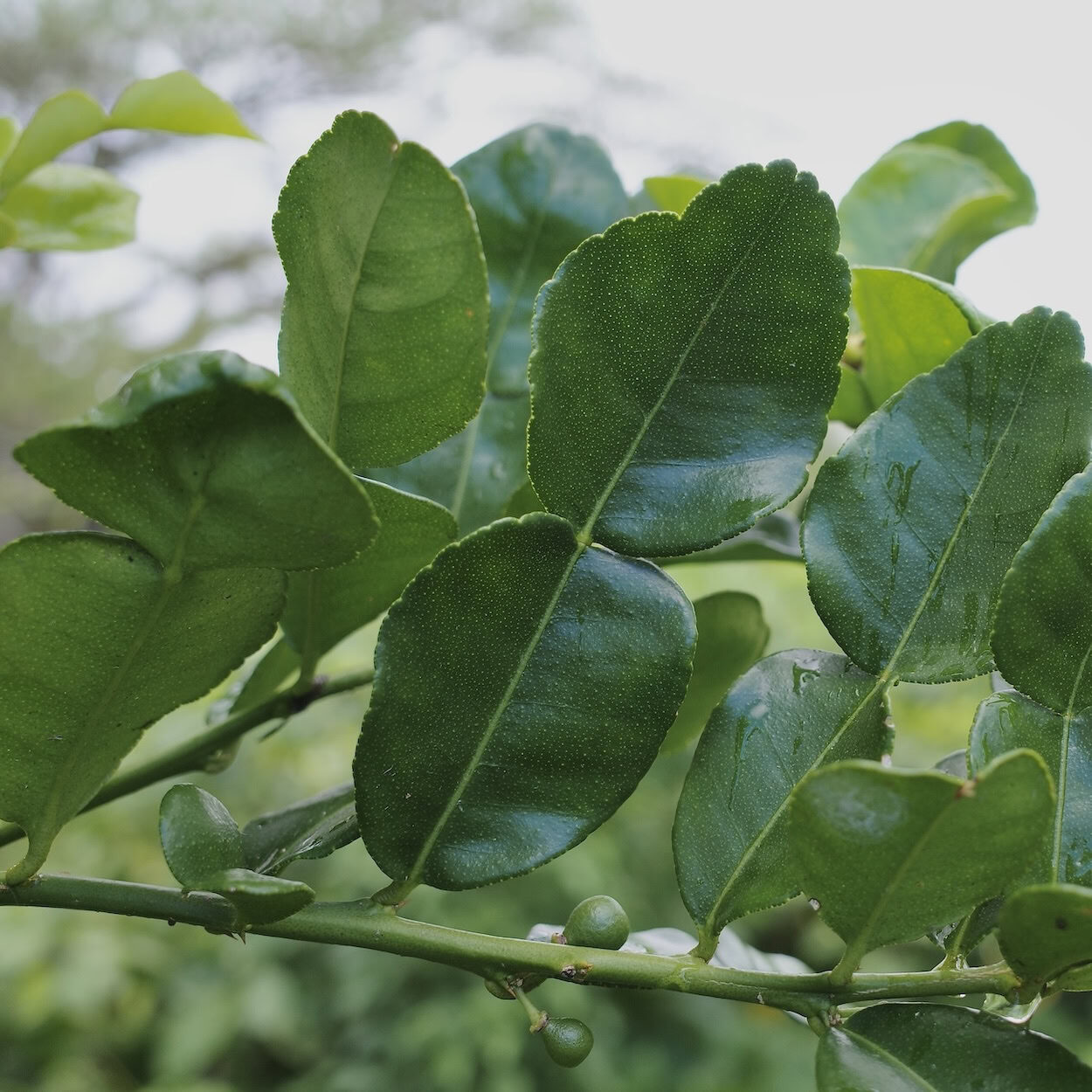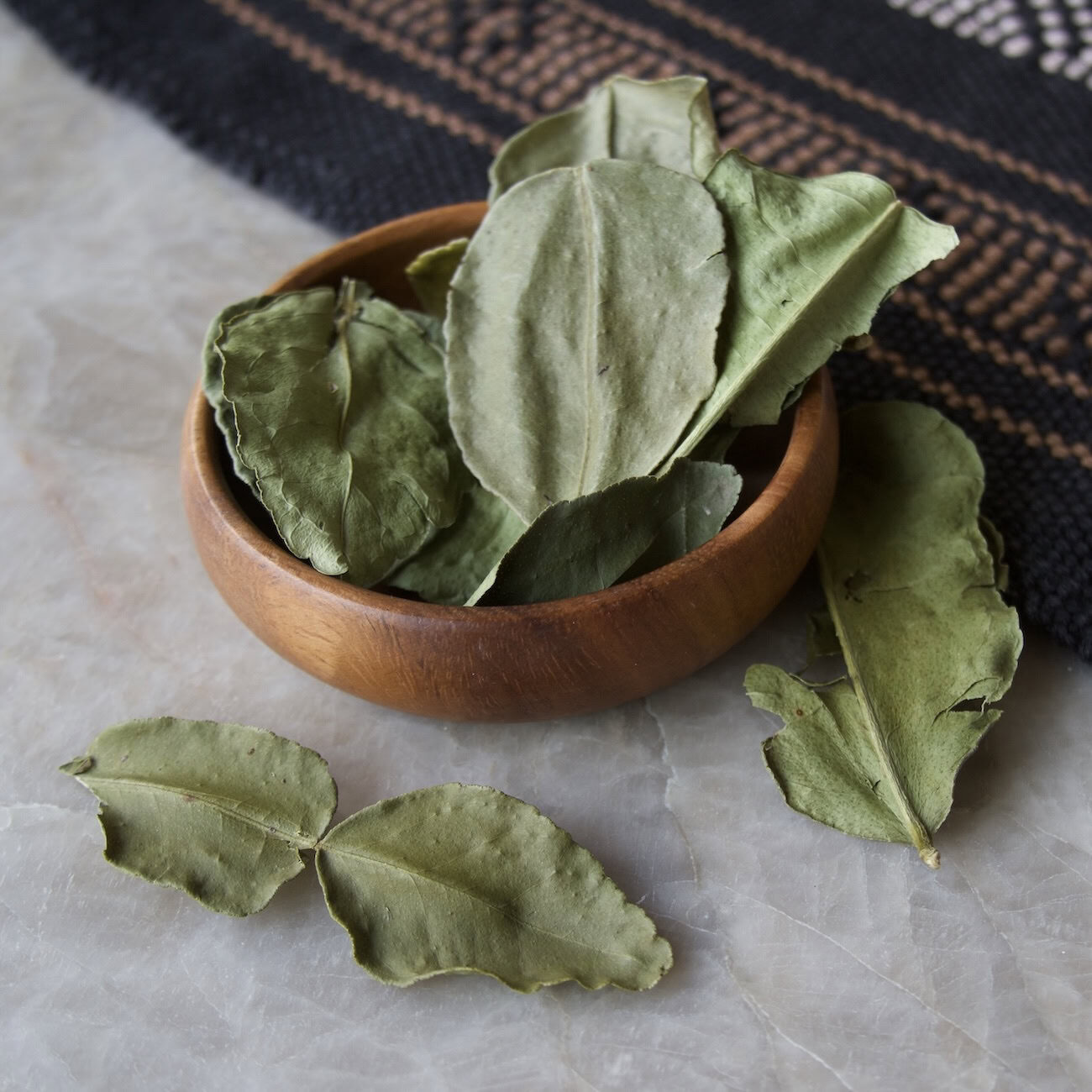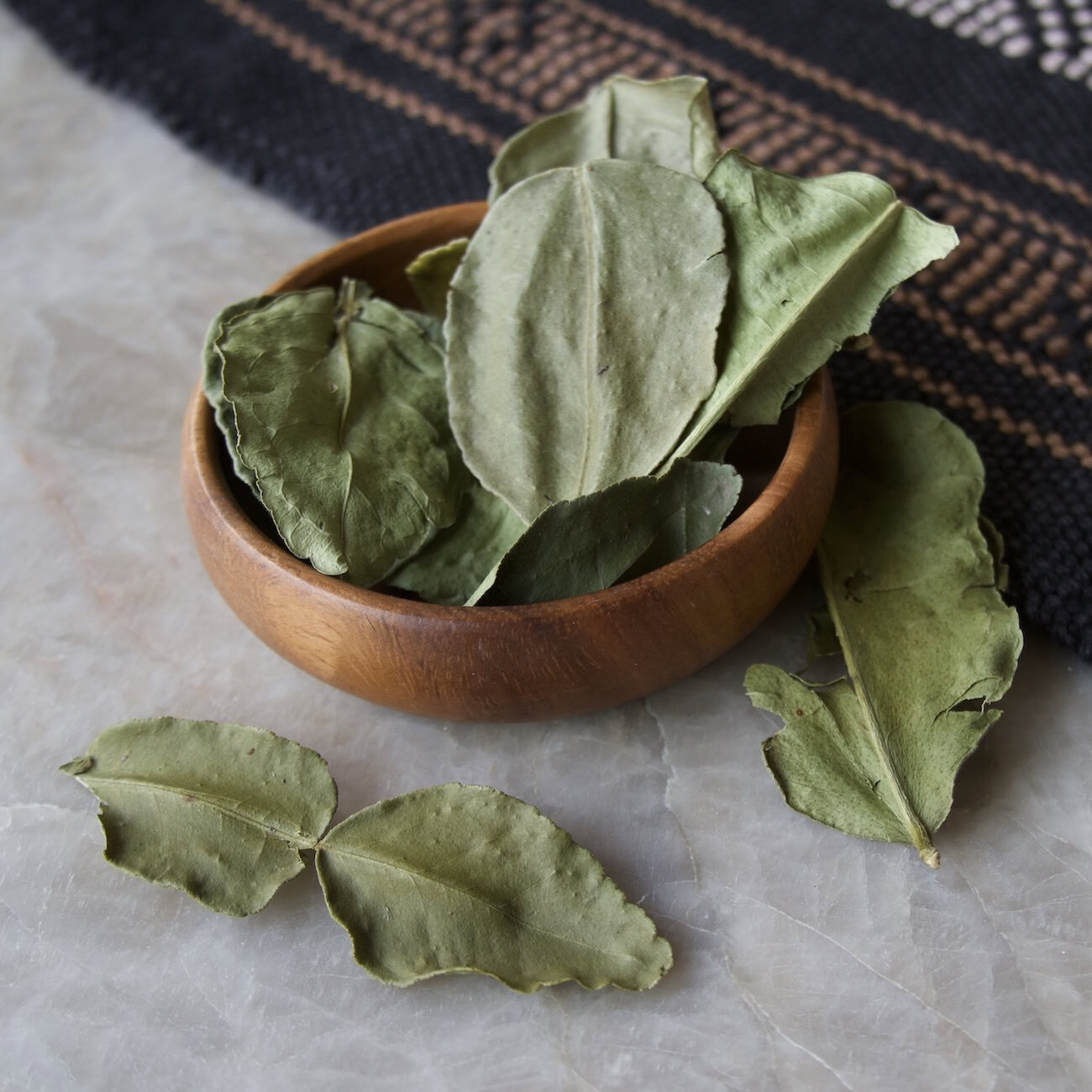Makrut Lime Leaf
Makrut lime leaf is the spice produced from the double-lobed leaves of Citrus hystrix, a thorny tropical evergreen tree in the citrus family.

REGION OF ORIGIN
Southeast Asia. While its precise origin is unclear, Citrus hystrix was likely initially domesticated in the ancient Indo-Malayan region, including present-day Thailand, Laos, Cambodia, Indonesia, Malaysia, and the Philippines. It thrives in many warm, humid climates with fertile soil, so it has now been cultivated in tropical and subtropical regions worldwide.
PART & COLOR
The double-lobed leaves are stiff, glossy, and deep green on top with a porous, matte, light green underside. The small, bumpy makrut limes themselves are equally prized. Their zest is renowned for its intense lime flavor and their juice is used in marinades, dressings, and sauces.
HARVEST
The makrut lime tree is evergreen, so leaves can be harvested year-round. However, they are most flavorful when young and tender, so peak season tends to align with the warmer months when new growth is most abundant. Harvesting leaves is challenging as they must be hand-picked while navigating around long thorns.

FLAVOR & AROMA PROFILE
Makrut lime leaves are a powerhouse. On the surface of every leaf are hundreds of little bumps that contain sacs of its volatile oils. Rubbing, bruising, or tearing a leaf releases them, filling the air with an invigorating aroma—a vibrant burst of lime zest, mandarin orange, and lemon peel, accompanied by subtle floral and grassy notes.
The fragrance is coupled with an intense citrusy flavor that has a sharp, slightly spicy edge. Its taste is distinctly lime-like, but with a unique complexity that transcends a typical lime’s sourness. A hint of bitterness balances out its sweetness, and an herbal quality adds depth. When dried, the scent is more muted and subdued, lacking the bright quality of fresh leaves. Dried leaves retain their flavor for up to a year (versus a week for fresh leaves), but it is less intense and nuanced and has a woody, hay-like undertone. Still, the convenience of having dried leaves on hand shouldn't be overlooked.
CULINARY USES
These potent leaves are indispensable to Southeast Asian cuisine. In Thailand, they are a staple in green and red curries and soups like tom yum and tom kha gai. They add brightness to Indonesian coconut dishes like rendang, soto, and nasi uduk. They also provide a critical zest to Malaysian spicy noodle soups like laksa and rice dishes like nasi lemak. They are crucial to traditional Cambodian dishes like amok trey, a steamed fish curry wrapped in banana leaves, and Filipino recipes like kinilaw, a raw seafood dish not unlike ceviche.
Fresh leaves are often preferred for their intense flavor. Remove the tough central vein, then tear, slice, chop, or bruise the leaves to release their oils before adding them to stir-fries, soups, salads, rice, broths, oils, and teas. Dried leaves can infuse liquids similar to bay leaf or curry leaf. They can also be ground into a powder and used as a spice rub or seasoning.


